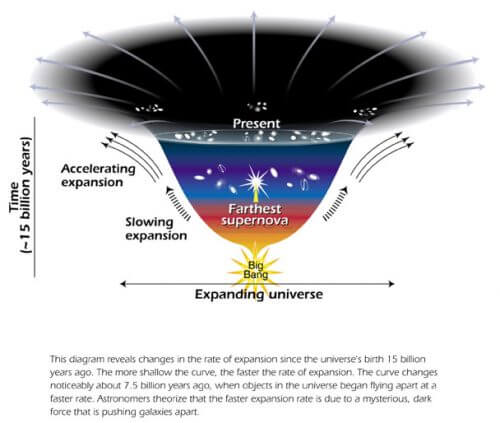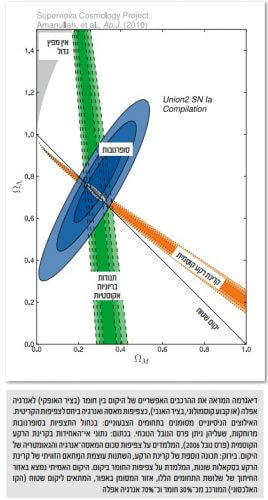The 1998 discovery by Saul Perlmutter, Brian Schmidt and Adam Rees, winners of the Nobel Prize this year, shocked the world of cosmology. Since Hubble's discovery, the Big Bang theory has ruled the roost, which has become the consensus

Until the end of the 20th century, astronomy and astrophysics were not recognized as basic branches of science that describe the essence of physics, such as the sciences related to the structure of matter and the elementary particles that make it up. Ironically, Edwin Hubble, one of the greatest astronomers of all time who discovered in the 20s the distance of galaxies and the law named after him, never won the Nobel Prize... Hubble's discovery made Albert Einstein admit the "big mistake of his life" - the introduction of the cosmological constant to the general relativity equation that describes the universe. 43 years after Einstein's death it was discovered that he may have been right after all. In early 2011, the Nobel Prize in Physics was awarded for this discovery.
If we do not take into account the discovery of cosmic radiation, which despite its name was discovered as an atmospheric phenomenon (Nobel Prize 1936), the first astrophysicist to win the Nobel (in 1967) was Hans Bethe, for understanding the nuclear reactions in the stars. The next Nobel Prize in astrophysics was awarded to the physicists Arno Panzias and Robert Wilson, who in 1965 discovered the cosmic radiation in the microwaves, this radiation was predicted by the big bang model whose discovery of Hubble is its experimental basis.
Since then, five more Nobel Prizes in Physics have been awarded for discoveries related to astrophysics (1983,1993, 2002,2006, 2011, XNUMX and XNUMX). The last two prizes, as well as the discovery of the background radiation, were awarded for a discovery in a relatively new branch - cosmology, which describes the structure of the universe at large.
In 2006, John Matter and George Smoot won the prize for discovering the non-uniformity of the cosmic background radiation in the XNUMXs. These are fluctuations at a rate of one to one hundred thousand in the temperature of the background radiation, which are the seeds of the structure of the galaxies.

The 1998 discovery by Saul Perlmutter, Brian Schmidt and Adam Rees, winners of the Nobel Prize this year, shocked the world of cosmology. Since Hubble's discovery, the Big Bang theory has ruled the roost, which became the consensus after the discovery of background radiation. According to this theory, the universe is expanding, but at a slower and slower rate, due to the gravitational force that the galaxies that make it up exert on each other. From measuring the distances of supernova explosions in distant galaxies, Perlmutter and his colleagues concluded that the expansion rate of the universe in the last 5 billion years (about a third of its current age) is actually increasing. This conclusion has far-reaching implications for our understanding of the nature of the universe.
Since gravity only works in the direction of attraction, there must be a repulsive force, a kind of pressure, that overcomes the gravitational pull and causes the expansion to accelerate. This force can be described by adding a constant term to the equation, similar to the one that Einstein added at the time to arrive at a static universe, called the "cosmological constant" or by its new name - dark energy, on the weight of dark matter.
Following the combination of this discovery with detailed observations of the cosmic background radiation, we now know that we do not understand most of the universe around us: about 70% of it is dark energy and about 30% is matter, most of which is dark and essentially different from the matter we know. Both have not yet been understood and are among the great puzzles of physics awaiting the next Nobel Prize.
The article was published in Galileo magazine, November 2011
